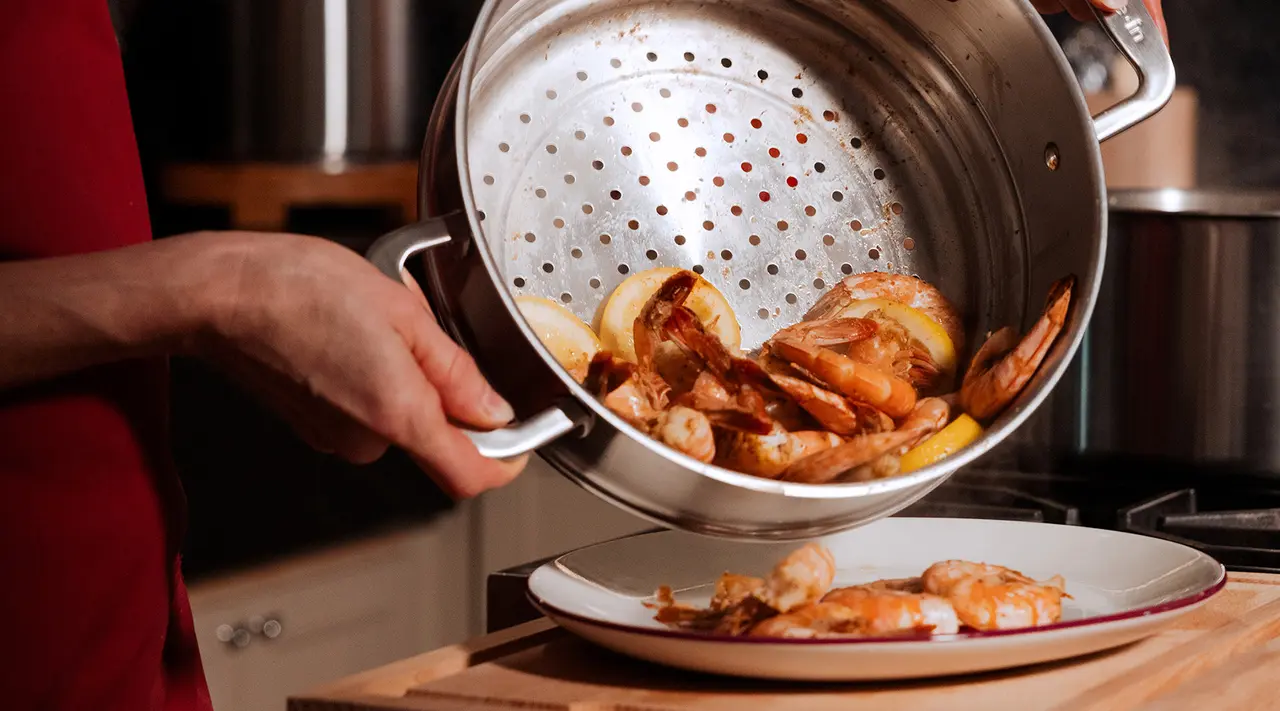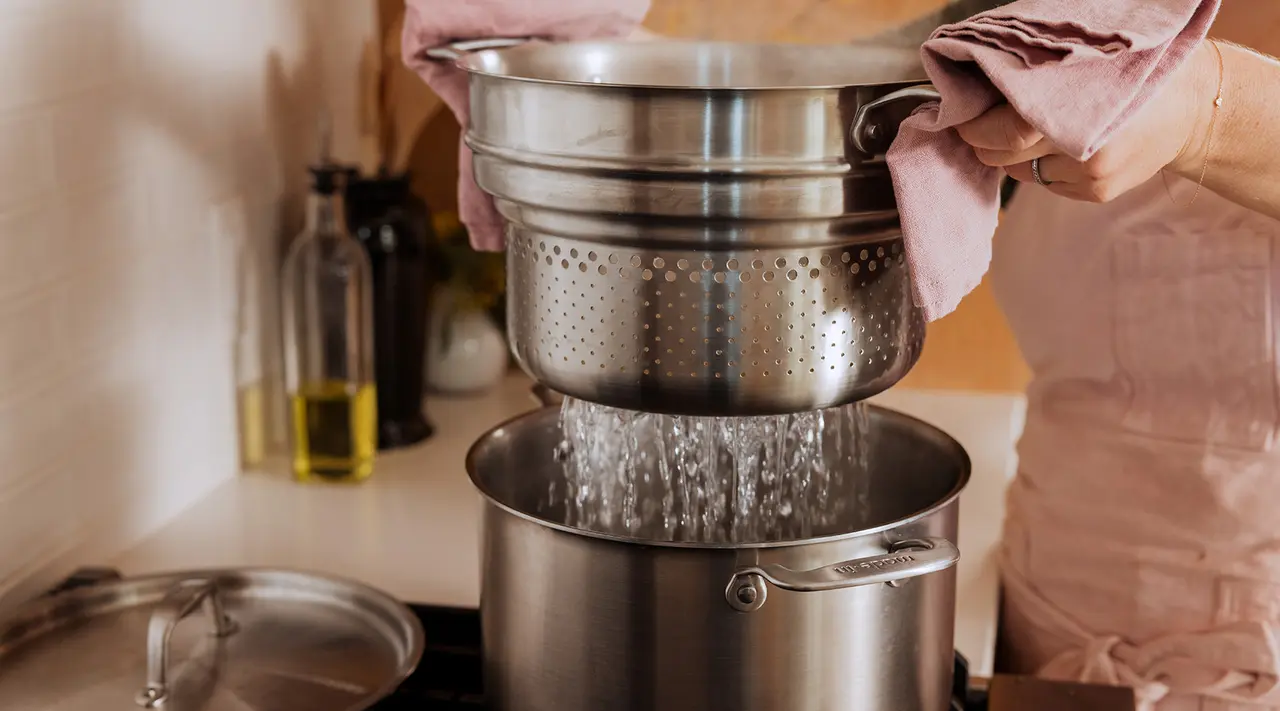The terms "colander" and "strainer" are often used interchangeably—and that's okay. However, these staple accessories serve slightly different purposes when it comes to their design and use in the kitchen. So, what’s the difference between a strainer and a colander? When should you use each? Follow along below to find out.
What Is a Colander?
A colander is a large, bowl-shaped container that’s made with small holes or slits along the sides and bottom to allow water or other liquids to pass through. This allows water to drain, while leaving the rest of the ingredients, such as a large portion of cooked pasta, in the container.
Colanders are heavy-duty kitchen items that can be made of any number of materials, ranging from simple plastics to stainless steel. They may or may not feature a flat base that allows them to be set down while continuing to drain. Most colanders will also have handles that allow for easy and safe draining of ingredients, even if they've been cooking in boiling water.
When to Use a Colander
Colanders are an essential in any kitchen. They're perhaps most commonly used when boiling pasta, rinsing rice before cooking (an important step to ensure the starch is removed), washing fruits and vegetables, or draining the grease from cooked ground beef or turkey.
What Is a Strainer?
The concept of a strainer is very similar to that of a colander—in fact, you could argue that a colander is really just a large strainer. The main difference, however, is that a strainer is generally a smaller kitchenware item that is used to strain liquid from things, like canned vegetables or to catch seeds while squeezing juice from a lemon. Strainers tend to be about the size of your palm, though they come in a variety of sizes to suit your needs.
Generally, they are not designed to stand up on their own, but may feature a single handle to allow for easy straining and draining of smaller volumes of liquid. Compared to colanders, strainers also tend to have smaller drainage holes. From a material standpoint, strainers are usually made of stainless steel for the handle and base, along with some sort of mesh material for drainage.
When to Use a Strainer
You wouldn't use a strainer to rinse or drain water from larger dishes, such as a pot of cooked pasta or a bushel of strawberries. However, you could use a strainer to easily drain the liquid from canned beans before adding them to a dish, or when squeezing lemons or oranges by hand—a strainer can also come in handy for catching unwanted seeds.
What About a Steamer Basket?

Steamer baskets are shallow pot inserts designed to hold food—often seafood or ingredients like vegetables or dumplings—above simmering water in a covered pot to cook in the steam produced by the water. These are often made of metal or bamboo and feature perforations throughout the basket, and are designed to be used in tandem with another pot, like a Stock Pot or large Saucepan.
A shallow stainless colander can sometimes be used as a steamer basket in a pinch, but if you're consistently steaming it's worthwhile to invest in one.
Colanders vs. Strainers: Which Is Better?
Ultimately, there's a place for both strainers and colanders in your kitchen. They both serve similar yet distinct purposes. If you like to cook pasta or need to rinse off fresh fruits or vegetables in larger quantities, then you'll absolutely want to have at least one quality colander in your kitchen. Meanwhile, strainers don't take up very much room and can come in handy for smaller drainage needs—so it's not a bad idea to keep a couple of them in one of your kitchen drawers as well.
Ready to Cook?
Ultimately, both colanders and strainers are tools you should have in your kitchen, because they serve different purposes. If you’re looking for a colander that’s designed to be used with pasta (but can also be used to rinse fruit and vegetables) our Stainless Clad Stock Pot with Pasta Insert is a worthy investment. The 8 QT Stock Pot can be used on its own to simmer stock or broth, and it’s also large enough to cook pasta for a crowd.
With the Pasta Insert, you no longer need to worry about placing a container under your colander to catch the pasta water, simply cook your pasta with the insert fitted inside the pot. Then, when you’re ready to drain, use the handles to remove the insert, leaving behind a pot full of pasta water that you can add into your sauce easily.






























